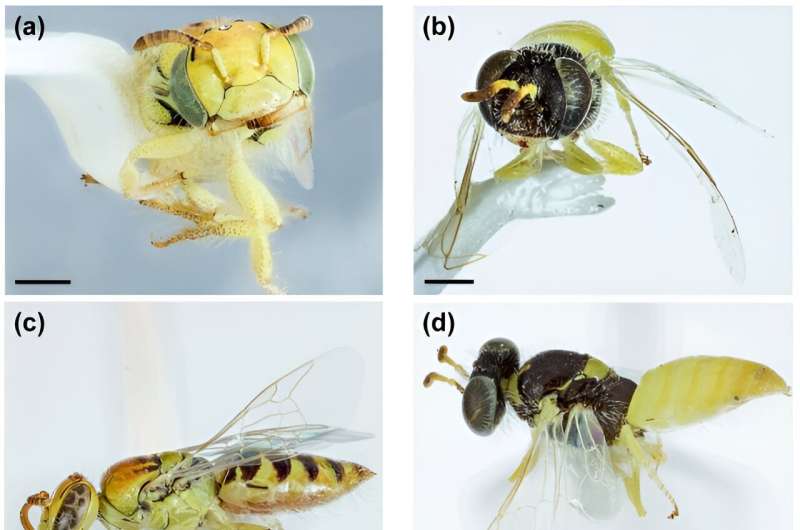This article has been reviewed according to Science X's editorial process and policies. Editors have highlighted the following attributes while ensuring the content's credibility:
fact-checked
trusted source
proofread
Two bee species become one as researchers solve identity puzzle

A new study by Curtin and Flinders Universities has found that what were thought to be two different species of native Australian bee are in fact one.
Lead researcher Dr. Kit Prendergast from the Curtin School of Molecular and Life Sciences said the study, based on native bee surveys at Perth locations of Wireless Hill, Shenton Park and Russo Reserve, fundamentally alters previous thinking.
Co-authored by Dr. James Dorey from Flinders University and published in the Australian Journal of Taxonomy, the research is titled "Xanthesma (Xenohesma) perpulchra and Xanthesma (Xanthesma) brachycera are conspecific based on DNA barcodes."
"Essentially the research team used DNA sequencing to show that what we used to think of as two different species of bees are actually just the males and females of one, single species," Dr. Prendergast said.
"For many native bee species in Australia, their descriptions were based on only one sex. Identifying males and females as belonging to the same species solely through observation can be challenging, as both sexes of the same species often display noticeable differences.
"In this study, I collected what appeared to be the female of a bee species that has been described only from the male—a species at the time called Xanthesma (Xenohesma) perpulchra. The team then used DNA analysis to confirm these female bees were in fact the same species as the male.
"Surprisingly, their DNA also matched another species, that had only ever been described from the female—the Xanthesma (Xanthesma) brachycera, so we were able to prove that the two were in fact the same species.
"It appears both sexes had never been collected in the same place at the same time, and both were described in the early 1900s, well before the advent of DNA analysis."
Dr. Prendergast said the findings showed the value of DNA barcoding in accurately identifying males and females that belong to the same species. This is particularly crucial because males and females of the same species may have distinct appearances, while different species of the same sex can appear quite similar.
"Our findings are significant because being able to correctly identify species is fundamentally important to virtually every aspect of biological sciences," Dr. Prendergast said.
"Accurate species identification enables us to determine how many species are present in an area, helps us understand the evolution of life on earth, and how species are related. It also allows us to assess conservation needs.
"We hope this research is just the tip of the iceberg when it comes to the taxonomy of Australian native bees, and that it inspires agencies and government to invest in more taxonomic work, especially on the Euryglossinae, which is an important, yet understudied group of bees native to Australia."
More information: Kit Prendergast et al, Xanthesma (Xenohesma) perpulchra and Xanthesma (Xanthesma) brachycera are conspecific based on DNA barcodes, Australian Journal of Taxonomy (2023). DOI: 10.54102/ajt.df83w
Provided by Curtin University
















